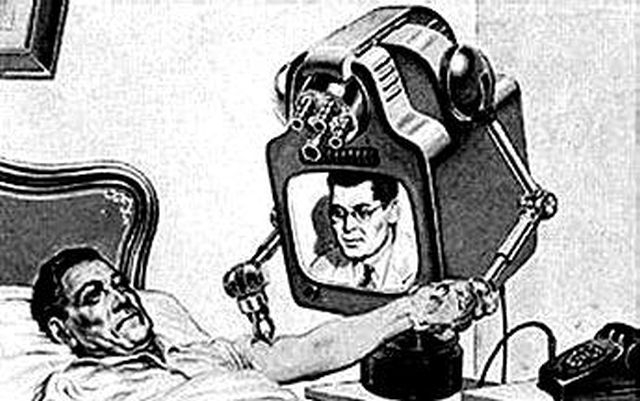Just How Teledoctors Are Revolutionizing Modern Health Care
Just How Teledoctors Are Revolutionizing Modern Health Care
Blog Article
Teledoctors: Bridging the Gap Between Clients and Medical Care Companies
The development of teledoctors stands for a significant change in the healthcare landscape, offering solutions to enduring accessibility concerns dealt with by individuals and carriers alike. By incorporating telemedicine right into conventional practices, medical care systems can reach remote and underserved populaces, offering important medical consultations without the obstacles of distance and traveling. This paradigm change not only improves client involvement yet additionally enhances source allotment for companies. However, the extensive adoption of teledoctors raises crucial inquiries concerning the sustainability of such practices and the ramifications for future healthcare distribution. What obstacles lie in advance in guaranteeing this version's effectiveness and equity?
Increase of Telemedicine

The increase of telemedicine is also fueled by the demand for cost-efficient health care. Health care systems internationally are under pressure to minimize expenditures while preserving quality care, and telemedicine supplies a sensible remedy. By lessening the need for physical sees, telemedicine reduces above expenses for medical care centers and inevitably reduces the financial worry on patients.
Furthermore, the COVID-19 pandemic functioned as a catalyst, accelerating the adoption of telemedicine methods. Social distancing measures and the need to decrease direct exposure risk required a change towards remote assessments, triggering regulative bodies to support and adjust telehealth services. This change has not just tried and tested telemedicine's efficiency but likewise its prospective to progress as a staple element of modern-day medical care systems.
Advantages for Patients
Mostly, telemedicine improves availability, enabling clients in remote or underserved areas to seek advice from medical care companies without the demand for comprehensive traveling. Telemedicine additionally provides individuals the comfort of obtaining medical recommendations and treatment from the comfort of their homes, lowering the time and cost linked with taking a trip to a healthcare center.
Furthermore, telemedicine sustains continuity of treatment by assisting in regular follow-ups and surveillance, which are important for taking care of chronic conditions. Individuals can quickly set up consultations and access healthcare services outside traditional workplace hours, suiting their hectic way of lives. This versatility results in boosted patient engagement and adherence to therapy plans, possibly resulting in far better wellness end results.
Furthermore, telemedicine can help reduce the risk of infection transmission, an issue enhanced by the COVID-19 pandemic. By reducing the requirement for in-person check outs, patients can stay clear of crowded waiting spaces and minimize direct exposure to contagious health problems. Inevitably, telemedicine encourages clients by giving prompt, reliable, and individualized health care solutions.
Advantages for Suppliers
For healthcare suppliers, telemedicine supplies substantial benefits that boost the performance and reach of their method. By leveraging electronic modern technology, service providers can expand their solutions to a broader demographic, consisting of those in remote or underserved locations. This not only relieves geographical barriers yet likewise optimizes individual retention and acquisition by making medical care more available.
Another key benefit is the decrease in overhead prices. With telemedicine, the need for physical room diminishes, permitting providers to reduce realty and functional expenses. Additionally, telemedicine assists in far better time monitoring by lowering the requirement for commuting and allowing for more versatile organizing. This flexibility can lead to raised client appointments per day, therefore improving income possibility.
Telemedicine additionally fosters a much more joint environment for health care providers. teledoctors. It enables seamless sharing of client information among professionals, enhancing analysis precision and treatment end results. Furthermore, digital platforms can incorporate with digital wellness documents (EHRs), boosting information precision and simplifying management jobs
Moreover, telemedicine improves client satisfaction, which is crucial for provider credibility and success. By supplying prompt and hassle-free care, companies can boost person loyalty and involvement, additionally enhancing the provider-patient connection.
Overcoming Obstacles
While telemedicine supplies numerous advantages for health care suppliers, it likewise presents obstacles that need cautious consideration. One substantial difficulty is guaranteeing information personal privacy and protection. As client info is transmitted digitally, the risk of data breaches rises, requiring robust cybersecurity procedures. Doctor have to abide by rigorous guidelines like HIPAA to protect sensitive details, thus requiring financial investment in secure systems and ongoing team training.
Another challenge is the digital divide, which can impede access to telemedicine services. Not all individuals have equal access to the required modern technology or web connection, particularly those in country or underserved locations. This variation can aggravate existing medical care inequalities, making it vital for suppliers to explore different remedies, such as collaborations with neighborhood organizations, to link this void.
Furthermore, there are constraints in performing physical exams remotely. Particular conditions call for in-person evaluation, highlighting the demand for a hybrid design that incorporates telemedicine with typical gos to. When telemedicine is appropriate and ensuring smooth transitions in between digital and in-person treatment., providers should navigate these challenges by developing procedures to recognize.
Future of Healthcare
The future of healthcare is poised for a transformative development, driven by the fast assimilation of technology and technology. Central to this change is the surge of telemedicine, which is redefining how medical services are accessed and delivered. With improvements in data, telehealth systems are becoming much more sophisticated, using real-time appointments, remote individual surveillance, and customized treatment strategies. This not only enhances person benefit however additionally increases accessibility to medical care, especially in underserved and rural areas.
Fabricated knowledge (AI) and artificial intelligence are likewise readied to play essential duties. These modern technologies can analyze vast amounts of data, offering anticipating understandings right into individual health have a peek here and wellness, boosting analysis precision, and customizing therapy plans. AI-driven tools can enhance health care providers' capabilities, bring about more enlightened decision-making and much better patient outcomes.
In addition, wearable technology and Internet of Clinical Things (IoMT) tools are transforming individual involvement and proactive health administration. These gadgets make it possible for continual health surveillance, permitting early detection of prospective problems and timely interventions.
As these modern technologies remain to breakthrough, they assure to develop a much useful content more effective, obtainable, and patient-centric medical care system, inevitably linking the void in between people and doctor. - teledoctors
Conclusion
Teledoctors are transforming healthcare by considerably boosting access and performance via remote examinations. This improvement supports clients in underserved areas by giving prompt medical guidance without requiring physical visits, thus boosting individual interaction and continuity of treatment. Health care companies benefit from more reliable time administration and enhanced partnership possibilities. In spite of challenges such as technological obstacles and regulative issues, the future of healthcare shows up effective and significantly inclusive due to the integration of telemedicine right into standard care models.

As telemedicine continues to reshape medical care delivery, clients stand to obtain considerably from this makeover. Primarily, telemedicine improves access, allowing individuals in underserved or remote areas to get in touch with medical care carriers without the demand for comprehensive traveling. Telemedicine additionally offers clients the comfort of obtaining clinical advice and treatment from the comfort of their homes, minimizing the time and price associated with taking a trip to a medical care center.
Ultimately, telemedicine empowers clients by offering prompt, effective, and individualized medical care solutions.
Report this page